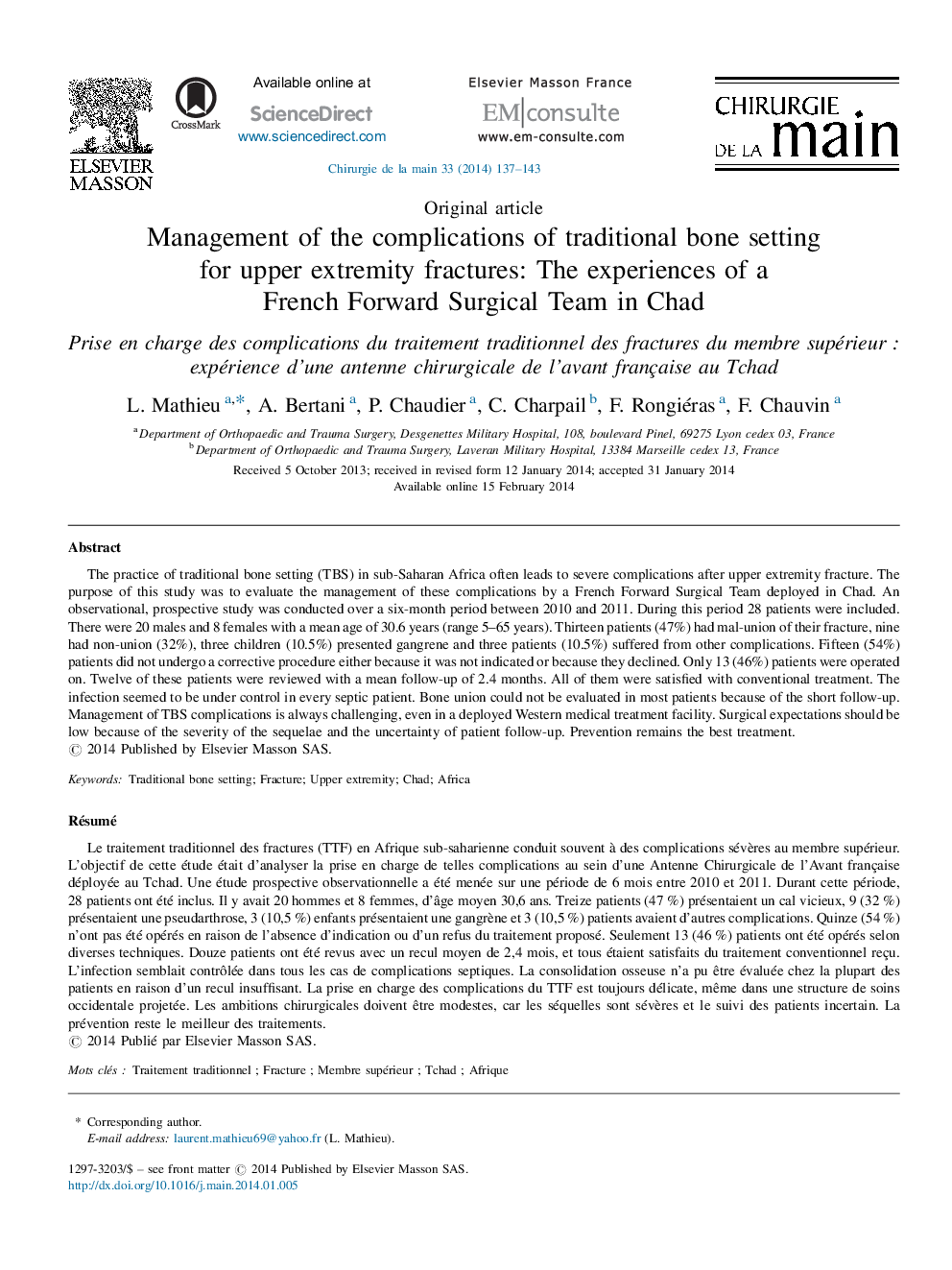| Article ID | Journal | Published Year | Pages | File Type |
|---|---|---|---|---|
| 4048939 | Chirurgie de la Main | 2014 | 7 Pages |
The practice of traditional bone setting (TBS) in sub-Saharan Africa often leads to severe complications after upper extremity fracture. The purpose of this study was to evaluate the management of these complications by a French Forward Surgical Team deployed in Chad. An observational, prospective study was conducted over a six-month period between 2010 and 2011. During this period 28 patients were included. There were 20 males and 8 females with a mean age of 30.6 years (range 5–65 years). Thirteen patients (47%) had mal-union of their fracture, nine had non-union (32%), three children (10.5%) presented gangrene and three patients (10.5%) suffered from other complications. Fifteen (54%) patients did not undergo a corrective procedure either because it was not indicated or because they declined. Only 13 (46%) patients were operated on. Twelve of these patients were reviewed with a mean follow-up of 2.4 months. All of them were satisfied with conventional treatment. The infection seemed to be under control in every septic patient. Bone union could not be evaluated in most patients because of the short follow-up. Management of TBS complications is always challenging, even in a deployed Western medical treatment facility. Surgical expectations should be low because of the severity of the sequelae and the uncertainty of patient follow-up. Prevention remains the best treatment.
RésuméLe traitement traditionnel des fractures (TTF) en Afrique sub-saharienne conduit souvent à des complications sévères au membre supérieur. L’objectif de cette étude était d’analyser la prise en charge de telles complications au sein d’une Antenne Chirurgicale de l’Avant française déployée au Tchad. Une étude prospective observationnelle a été menée sur une période de 6 mois entre 2010 et 2011. Durant cette période, 28 patients ont été inclus. Il y avait 20 hommes et 8 femmes, d’âge moyen 30,6 ans. Treize patients (47 %) présentaient un cal vicieux, 9 (32 %) présentaient une pseudarthrose, 3 (10,5 %) enfants présentaient une gangrène et 3 (10,5 %) patients avaient d’autres complications. Quinze (54 %) n’ont pas été opérés en raison de l’absence d’indication ou d’un refus du traitement proposé. Seulement 13 (46 %) patients ont été opérés selon diverses techniques. Douze patients ont été revus avec un recul moyen de 2,4 mois, et tous étaient satisfaits du traitement conventionnel reçu. L’infection semblait contrôlée dans tous les cas de complications septiques. La consolidation osseuse n’a pu être évaluée chez la plupart des patients en raison d’un recul insuffisant. La prise en charge des complications du TTF est toujours délicate, même dans une structure de soins occidentale projetée. Les ambitions chirurgicales doivent être modestes, car les séquelles sont sévères et le suivi des patients incertain. La prévention reste le meilleur des traitements.
